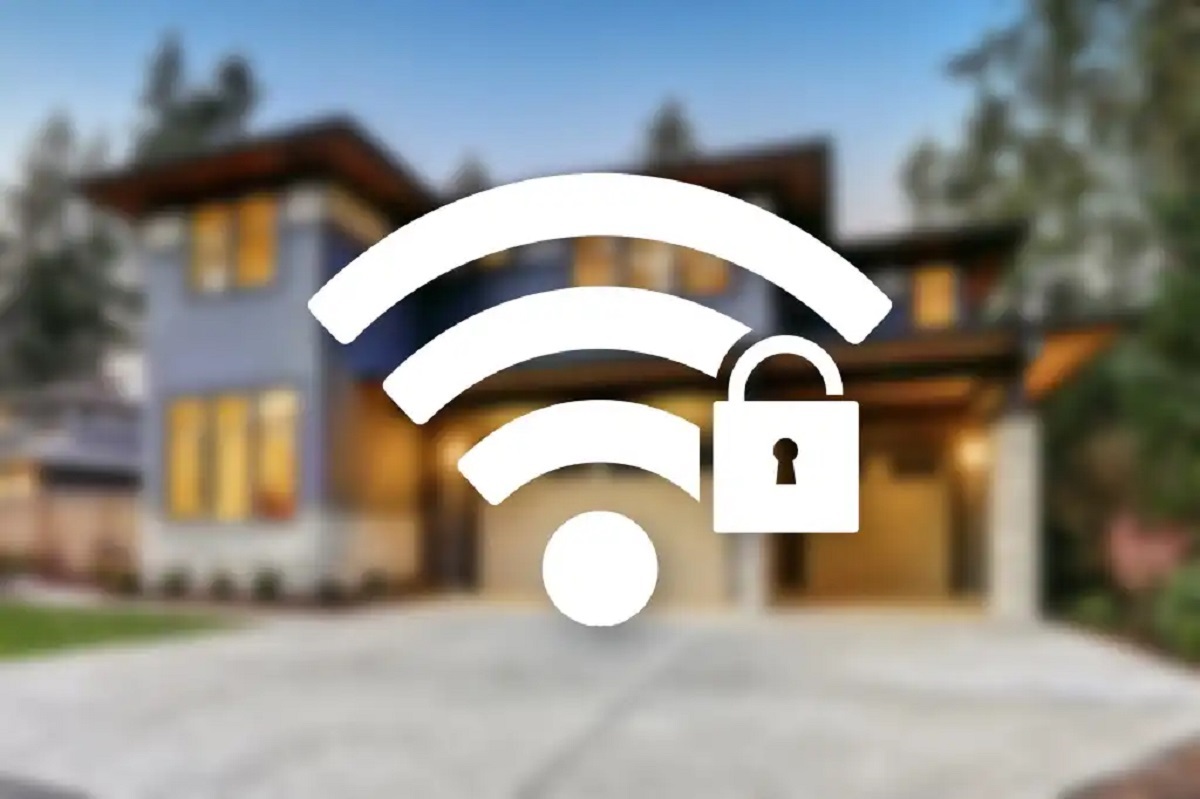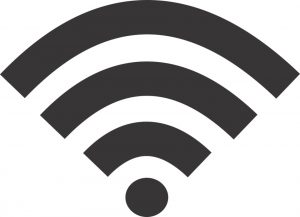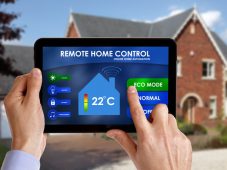Understanding Wi-Fi
Wi-Fi has become an essential part of our daily lives, allowing us to connect to the internet wirelessly. But what exactly is Wi-Fi and how does it work? In this section, we will dive into the basics of Wi-Fi technology.
Wi-Fi, short for Wireless Fidelity, is a wireless communication technology that enables devices such as smartphones, laptops, and smart home devices to connect to the internet without the need for physical cables. It operates using radio waves, specifically the 2.4 GHz and 5 GHz frequency bands, allowing for high-speed data transmission.
A Wi-Fi network consists of two main components: a wireless router and wireless devices. The router acts as the central hub, transmitting and receiving data between the internet and your devices. It creates a local network, also known as a WLAN (Wireless Local Area Network), that allows your devices to communicate with each other.
To establish a connection, your device needs to have a Wi-Fi adapter, which is typically built-in for smartphones and laptops. The adapter sends and receives signals to and from the router, allowing data to be transferred wirelessly.
One of the key advantages of Wi-Fi is its ability to provide mobility. With Wi-Fi, you can access the internet from various locations within the range of your network. This flexibility has revolutionized the way we work, play, and communicate, allowing us to be connected anytime and anywhere within our Wi-Fi coverage area.
Another important aspect of Wi-Fi is its speed and bandwidth. The latest Wi-Fi standards, such as Wi-Fi 6 (802.11ax), offer faster speeds, lower latency, and increased capacity to handle multiple devices simultaneously. This is particularly crucial in today’s connected homes, where multiple devices like smartphones, tablets, smart TVs, and smart home devices all compete for bandwidth.
Overall, Wi-Fi has become an integral part of our modern lifestyle. Understanding how it works and its capabilities is essential in ensuring a seamless and reliable internet experience at home and on the go. In the following sections, we will explore how to assess your internet needs, find the right Wi-Fi provider, choose the appropriate router, set up your network, secure your connection, troubleshoot connection issues, extend Wi-Fi range, and maximize speed and performance.
Assessing Your Internet Needs
Before setting up your Wi-Fi network, it’s important to assess your internet needs to ensure you subscribe to the right plan. Factors such as the number of devices, online activities, and household members will determine the suitable internet speed and data allowance for your home.
Start by evaluating the number of devices that will be connected to your Wi-Fi network. Count all smartphones, tablets, laptops, smart TVs, gaming consoles, and smart home devices. Every device connected to the network will consume bandwidth, so it’s crucial to ensure that your internet plan can handle the simultaneous usage of multiple devices.
Consider your household’s online activities. If you have heavy internet users who frequently stream 4K videos, participate in online gaming, or download large files, you will need a high-speed internet plan with ample data allowance to support these activities. On the other hand, if your internet usage is mainly for casual web browsing and email, a lower-speed plan may suffice.
Take into account the number of household members and their internet usage patterns. In a larger household with multiple occupants, it’s important to ensure that the internet plan can accommodate everyone’s needs. If you have family members who work or study from home, it’s crucial to have a reliable and fast internet connection to avoid interruptions and delays in their tasks.
Consider future growth and scalability. If you anticipate an increase in the number of devices or a change in online activities, it’s wise to choose an internet plan that can adapt to your evolving needs. This way, you won’t have to upgrade your plan or experience any service disruptions in the future.
Once you have assessed your internet needs, reach out to different internet service providers (ISPs) in your area to compare their plans. Take note of the internet speeds, data caps, pricing, and customer reviews. It’s also important to check the availability and reliability of ISPs in your specific location.
By carefully assessing your internet needs and choosing the right ISP, you can ensure that your Wi-Fi network is capable of delivering the required speed and data allowance to support your online activities. In the next section, we will discuss how to find the right Wi-Fi provider for your home.
Finding the Right Wi-Fi Provider
When it comes to choosing a Wi-Fi provider, there are several factors to consider to ensure you get the best service for your home. Here are some steps to help you find the right Wi-Fi provider:
1. Research and Compare Providers: Start by researching and comparing different Wi-Fi providers in your area. Look for reputable providers with a solid track record of delivering reliable internet service. Consider factors such as internet speeds, coverage, customer reviews, and pricing.
2. Check Availability: Determine which providers are available in your specific location. Some providers may not offer service in certain areas, so it’s essential to check for availability before proceeding further.
3. Assess Your Needs: Consider your household’s internet needs, including the number of devices, online activities, and expected usage. Match your requirements with the service offerings of different providers to identify those that can meet or exceed your needs.
4. Speed and Bandwidth: Look for providers that offer fast and consistent internet speeds. Consider the bandwidth requirements for your online activities, such as streaming, gaming, or video conferencing, to ensure a seamless experience without interruptions or buffering.
5. Data Caps and Unlimited Plans: Check if the provider has data caps or offers unlimited plans. If you have high data usage or multiple users, unlimited plans can provide peace of mind without worrying about exceeding data limits.
6. Customer Support: Evaluate the quality of customer support provided by the Wi-Fi providers. Look for a provider with responsive and helpful customer service that can assist you in case of any issues or technical difficulties.
7. Bundled Services: Consider whether the provider offers bundled services, such as TV or phone services, which can potentially save you money and simplify billing.
8. Contract Terms and Pricing: Carefully review the contract terms, including installation fees, contract duration, and any additional charges. Compare prices and consider your budget while taking into account the value provided by each provider.
9. Seek Recommendations: Ask friends, family, or neighbors for their recommendations and experiences with different Wi-Fi providers. Personal referrals can provide valuable insights into the reliability and quality of service.
By following these steps, you can narrow down your options and find the Wi-Fi provider that offers the best combination of speed, reliability, coverage, and customer support for your home. In the next section, we will discuss how to choose the right Wi-Fi router for your network setup.
Choosing the Right Wi-Fi Router
Selecting the right Wi-Fi router is crucial for establishing a stable and high-performing wireless network in your home. Here are some key factors to consider when choosing a Wi-Fi router:
1. Wireless Standards: Look for a router that supports the latest Wi-Fi standards, such as Wi-Fi 6 (802.11ax) or Wi-Fi 5 (802.11ac). These standards offer faster speeds, improved range, and better performance compared to older standards.
2. Speed and Performance: Consider the router’s maximum speed rating and its actual performance. Look for routers that offer higher speed ratings, such as AC1750 or AX3000, to ensure a fast and reliable Wi-Fi connection for all your devices.
3. Bandwidth: Determine the number of devices that will be connected to your network and their bandwidth requirements. Choose a router that can handle multiple devices simultaneously without experiencing any slowdowns or latency issues.
4. Coverage: Assess the size of your home and the range requirements for your Wi-Fi network. Look for routers with multiple antennas or mesh Wi-Fi systems that can extend coverage throughout your home, eliminating dead spots and ensuring a strong signal in every room.
5. Dual-Band or Tri-Band: Consider whether you need a router with dual-band or tri-band functionality. Dual-band routers operate on both the 2.4 GHz and 5 GHz frequency bands, providing more flexibility and reducing congestion. Tri-band routers add an additional 5 GHz band, ideal for homes with many connected devices and high-bandwidth activities.
6. Security Features: Ensure that the router has built-in security features, such as firewalls and encryption protocols, to protect your network from unauthorized access and ensure the privacy of your data.
7. Ease of Setup and Management: Look for routers that offer easy setup procedures and user-friendly management interfaces. Some routers come with mobile apps that simplify the setup process and allow for convenient management of your network settings.
8. Budget: Set a budget for your Wi-Fi router and compare the features and performance offered within that range. Avoid overspending on features you don’t need, but also consider investing in a reliable router to avoid constant connectivity and performance issues.
9. Reviews and Recommendations: Read online reviews and seek recommendations from reliable sources or friends who have already used the routers you are considering. This can provide valuable insights and help you make an informed decision.
By carefully considering these factors, you can select a Wi-Fi router that meets your specific needs, providing stable and fast internet connectivity throughout your home. In the next section, we will guide you through the process of setting up your Wi-Fi network.
Setting Up Your Wi-Fi Network
After choosing the right Wi-Fi router, it’s time to set up your Wi-Fi network. Follow these steps to get your network up and running:
1. Position the Router: Find a central location in your home to place the router. Ideally, it should be elevated and away from physical obstructions like walls and metal objects. This will help ensure optimal signal coverage.
2. Connect the Router: Use an Ethernet cable to connect your router to the modem provided by your internet service provider. This will establish the connection between your router and the internet.
3. Power on the Router: Plug the router into a power outlet and turn it on. Wait for a few minutes for it to boot up and initialize.
4. Access the Router’s Settings: Open a web browser and enter the router’s IP address in the address bar. This will take you to the router’s settings page. Refer to the router’s manual for the default IP address and login credentials.
5. Configure the Network Name (SSID) and Password: Set a unique and easily recognizable network name (SSID) for your Wi-Fi network. Create a strong password to secure it from unauthorized access.
6. Select the Wi-Fi Band: If your router supports both 2.4 GHz and 5 GHz bands, choose which one to enable based on your device compatibility and network requirements. The 2.4 GHz band provides better coverage, while the 5 GHz band offers faster speeds.
7. Enable Network Encryption: Enable network encryption, preferably using the WPA2 or WPA3 security protocols, to protect your network from unauthorized access. Set a strong and unique encryption key.
8. Customize Advanced Settings (Optional): Depending on your needs, you can customize additional settings such as port forwarding, guest networks, parental controls, and Quality of Service (QoS). Refer to the router’s manual or online resources for guidance.
9. Connect Devices: Use the Wi-Fi network name (SSID) and password you set to connect your devices to the network. On each device, navigate to the Wi-Fi settings and select your network from the list of available networks. Enter the password when prompted, and you should be connected.
10. Test the Network: Once connected, test your Wi-Fi network by browsing the internet, streaming videos, or performing other online activities on your devices. Ensure consistent connectivity and satisfactory performance.
By following these steps, you can easily set up your Wi-Fi network and enjoy high-speed internet connectivity throughout your home. In the next section, we will discuss how to secure your Wi-Fi network from potential threats.
Securing Your Wi-Fi Network
Ensuring the security of your Wi-Fi network is crucial to protect your personal data and prevent unauthorized access. Here are some important steps to secure your Wi-Fi network:
1. Change the Default Credentials: One of the first things you should do is change the default login credentials for your router. This includes the username and password used to access the router’s settings page. Choose strong and unique credentials that are not easily guessable.
2. Enable Network Encryption: Enable network encryption using the most secure protocol available on your router, such as WPA2 or WPA3. Encryption ensures that the data transmitted over your network is encrypted and cannot be easily intercepted by malicious users.
3. Use a Strong Wi-Fi Password: Set a strong Wi-Fi password that combines uppercase and lowercase letters, numbers, and special characters. Avoid using easily guessable passwords like birthdays or common phrases. Regularly update your Wi-Fi password to enhance security.
4. Disable Remote Management: Disable remote management of your router to prevent unauthorized individuals from accessing and modifying your router’s settings remotely. This feature should only be enabled if necessary, and access should be restricted to trusted individuals.
5. Enable Firewall Protection: Activate the built-in firewall on your router to block unauthorized access to your network. A firewall acts as a barrier between your network and the external internet, filtering incoming and outgoing traffic.
6. Change the Default Network Name (SSID): Modifying the default network name (SSID) of your Wi-Fi network adds an extra layer of security. Avoid using personal information or easily identifiable names. Use a unique and generic name that doesn’t reveal the brand or type of router you are using.
7. Disable WPS (Wi-Fi Protected Setup): WPS is a feature that allows for easy device connection to your Wi-Fi network. However, it can also be a potential security vulnerability. Disable WPS in your router’s settings to prevent unauthorized devices from connecting to your network.
8. Regularly Update Firmware: Keep your router’s firmware up to date by checking for and installing the latest updates. Firmware updates often include security patches that address known vulnerabilities and ensure optimal performance.
9. Monitor Connected Devices: Periodically review the list of connected devices in your router’s settings. Ensure that only authorized devices are connected. If you notice any unknown or suspicious devices, immediately change your Wi-Fi password and investigate further.
10. Educate Household Members: Educate everyone in your household about the importance of Wi-Fi security. Share the Wi-Fi password responsibly and advise against connecting to public or unsecured networks.
By following these steps, you can significantly enhance the security of your Wi-Fi network and safeguard your personal information and online activities. In the next section, we will discuss how to troubleshoot common Wi-Fi connection issues.
Troubleshooting Wi-Fi Connection Issues
Wi-Fi connection issues can be frustrating, but they can often be resolved with some basic troubleshooting steps. Here are some common Wi-Fi connection issues and ways to troubleshoot them:
1. Check the Basics: Ensure that your Wi-Fi router is powered on and properly connected to the modem. Verify that the Wi-Fi network is active and that the correct network name (SSID) and password are entered on your device.
2. Restart Devices: Sometimes, simply restarting your devices can resolve connection issues. Power off your router and device, wait for a few seconds, and then power them back on. This can refresh the network settings and establish a new connection.
3. Move Closer to the Router: If you are experiencing weak or unstable Wi-Fi signals, try moving closer to the router. Wi-Fi signals can be affected by physical obstacles such as walls or other electronic devices. By reducing the distance between your device and the router, you may improve the signal strength.
4. Check Wi-Fi Channel: If you live in an area with many Wi-Fi networks, there may be congestion on certain channels. Log in to your router’s settings and change the Wi-Fi channel to a less congested one. This can minimize interference and improve connection stability.
5. Update Router Firmware: Ensure that your router’s firmware is up to date. Outdated firmware can cause compatibility issues and security vulnerabilities. Check for firmware updates on the manufacturer’s website or within the router’s settings page.
6. Disable Interference Sources: Other electronic devices, such as cordless phones or microwave ovens, can interfere with Wi-Fi signals. Keep these devices away from the router or move your router away from them to minimize interference.
7. Reset Network Settings: If you are still experiencing connection issues, try resetting the network settings on your device. This will erase all saved network information and restore the default settings. Then, reconnect to your Wi-Fi network as if it were a new connection.
8. Reposition the Router’s Antennas: Adjust the position of your router’s antennas to optimize signal coverage. Tilting or repositioning the antennas can help redirect and improve the signal in specific areas of your home.
9. Check for Rogue Devices: Periodically check the list of connected devices in your router’s settings to ensure that only authorized devices are connected. If you suspect any rogue devices, change your Wi-Fi password and enable MAC address filtering for added security.
10. Contact Your Internet Service Provider: If you have exhausted all troubleshooting steps and are still experiencing persistent connection issues, contact your internet service provider (ISP) for assistance. They can help identify and resolve any network-related problems.
By following these troubleshooting steps, you can diagnose and resolve common Wi-Fi connection issues. Remember to approach each issue systematically, starting with the simplest solutions and gradually progressing to more advanced troubleshooting methods. In the next section, we will discuss how to extend the range of your Wi-Fi network.
Extending Wi-Fi Range at Home
Having a weak Wi-Fi signal or dead spots in certain areas of your home can be frustrating. Fortunately, there are several methods you can employ to extend the range of your Wi-Fi network and improve coverage. Here are some effective ways to extend the Wi-Fi range at home:
1. Reposition Your Wi-Fi Router: Start by repositioning your Wi-Fi router to a more central location in your home. By placing it in a central area, away from obstructions, you can maximize signal coverage and reach more areas of your home.
2. Adjust Router Antennas: Most modern routers come with adjustable antennas. Experiment with tilting and positioning the antennas to optimize the Wi-Fi signal direction. Point the antennas perpendicular to each other, or try positioning one vertically and the other horizontally for broader coverage.
3. Use a Wi-Fi Range Extender: A Wi-Fi range extender is a device that captures your existing Wi-Fi signal and repeats it, extending the range of your network. Place the range extender in an area where the Wi-Fi signal from the router is still strong but reaches the area where you experience weak coverage.
4. Utilize Powerline Adapters: Powerline adapters use the electrical wiring in your home to transmit data signals, effectively extending your Wi-Fi network. One adapter is connected to the router, while another is placed in the area where you need an extended Wi-Fi signal.
5. Invest in a Mesh Wi-Fi System: A mesh Wi-Fi system is a network of interconnected devices that work together to provide seamless Wi-Fi coverage throughout your home. The devices, known as nodes, communicate with each other to create a unified network, eliminating dead zones and providing consistent Wi-Fi coverage in all areas.
6. Upgrade to a High-Gain Antenna: Consider upgrading the antenna on your router to a high-gain antenna. High-gain antennas have a more focused signal, allowing for greater reach and increased signal strength. This can significantly improve Wi-Fi coverage, especially in large homes or buildings with multiple floors.
7. Utilize Wi-Fi Repeaters: Similar to range extenders, Wi-Fi repeaters capture the existing Wi-Fi signal and rebroadcast it, extending the range. Place the repeater at a point where the signal from the router is still strong but reaches the areas with weak coverage.
8. Check for Interference: Check for nearby devices or appliances that may interfere with your Wi-Fi signal, such as cordless phones, baby monitors, or microwave ovens. Keep your router away from these devices or try to minimize their usage while using Wi-Fi.
9. Employ Wi-Fi Channel Optimization: Wi-Fi channels can become crowded, especially in dense areas with many Wi-Fi networks. Use a Wi-Fi analyzer tool to identify the least congested channel and change your router’s settings accordingly to optimize performance.
10. Upgrade to a More Powerful Router: If all else fails, consider upgrading to a more powerful router. Look for routers with higher transmit power and better coverage capabilities to ensure a strong and reliable Wi-Fi signal throughout your home.
By employing these methods, you can extend the Wi-Fi range at home and eliminate dead spots, providing better coverage for all your devices. Experiment with different approaches to find the best solution for your specific home layout and needs. In the next section, we will discuss how to maximize Wi-Fi speed and performance.
Maximizing Wi-Fi Speed and Performance
Having a fast and reliable Wi-Fi connection is essential for smooth internet usage. To maximize Wi-Fi speed and performance, consider the following tips:
1. Optimize Router Placement: Position your router in a central location, away from obstacles and electronic devices that can interfere with the signal. Ensure that the router is elevated and has a clear line of sight to your devices.
2. Upgrade to a Higher-Speed Internet Plan: Consider upgrading your internet plan to a higher speed if you frequently engage in bandwidth-intensive activities like streaming 4K videos or online gaming. Contact your internet service provider (ISP) to inquire about available plans.
3. Utilize Bandwidth-Hungry Devices on 5 GHz: Connect devices that require high bandwidth, such as gaming consoles or smart TVs, to the router’s 5 GHz band. This band typically offers faster speeds and less interference compared to the 2.4 GHz band.
4. Limit Background Network Activity: Avoid running bandwidth-heavy tasks, such as large file downloads or uploads, while using real-time applications like video conferencing or online gaming. This ensures that ample bandwidth is available for time-sensitive activities.
5. Enable Quality of Service (QoS): Enable QoS settings on your router to prioritize specific applications or devices. This ensures that bandwidth is allocated efficiently, improving performance for critical tasks such as video streaming or online gaming.
6. Keep Router Firmware Updated: Regularly check for firmware updates for your router and install them as they become available. These updates often include bug fixes, security enhancements, and performance optimizations.
7. Secure Your Wi-Fi Network: A secured network prevents unauthorized access and ensures that your bandwidth is dedicated to your own devices. Implement strong encryption protocols, change default passwords, and regularly check for connected devices.
8. Manage Wi-Fi Channel Congestion: Use a Wi-Fi analyzer tool to check for channel congestion in your area. Switch to a less congested channel or enable automatic channel selection on your router to optimize Wi-Fi performance.
9. Upgrade Your Router’s Antennas: Consider upgrading your router’s antennas to high-gain antennas. These antennas provide better range and signal strength, resulting in improved Wi-Fi performance throughout your home.
10. Implement Wi-Fi Repeaters or Mesh Networks: If you have a large home or areas with poor Wi-Fi coverage, consider using Wi-Fi repeaters or investing in a mesh network. These solutions can boost signal strength and extend coverage without sacrificing performance.
By implementing these strategies, you can maximize Wi-Fi speed and performance, ensuring a seamless and enjoyable internet experience. Experiment with different approaches to find the best combination of settings and hardware for your specific needs. In the next section, we will explore what future Wi-Fi technologies we can expect to see.
Future Wi-Fi Technologies: What to Expect?
As technology continues to evolve, so does Wi-Fi. The future holds exciting advancements in Wi-Fi technology, promising faster speeds, improved performance, and enhanced connectivity. Here are some trends and technologies to look out for in the future:
1. Wi-Fi 6E: Wi-Fi 6E, an extension of Wi-Fi 6, introduces support for the 6 GHz frequency band. This additional spectrum availability provides increased capacity and less congestion, resulting in even higher speeds and lower latency.
2. Multi-Gigabit Speeds: Wi-Fi standards like Wi-Fi 6 and future iterations are designed to deliver multi-gigabit speeds, surpassing the current gigabit per second speeds. This will enable faster downloads, smoother streaming, and improved performance for bandwidth-intensive tasks.
3. Improved Range and Coverage: Future Wi-Fi technologies are expected to provide better range and coverage, eliminating dead spots and extending connectivity to areas that were previously challenging to reach.
4. IoT (Internet of Things) Optimization: The proliferation of IoT devices calls for Wi-Fi technologies that can efficiently handle numerous connected devices simultaneously. Future Wi-Fi advancements will prioritize device management, minimizing latency, improving security, and enhancing overall performance for IoT applications.
5. Enhanced Security: As cybersecurity threats continue to evolve, Wi-Fi technology will incorporate stronger encryption and authentication protocols to ensure the security and privacy of user data. The integration of WPA3 and other advanced security features will make Wi-Fi networks more secure and less susceptible to attacks.
6. Seamless Roaming: Future Wi-Fi technologies will focus on seamless roaming capabilities, allowing devices to switch between access points or networks without interruption. This will ensure uninterrupted connectivity as users move throughout their homes or public spaces.
7. AI and Machine Learning Integration: AI and machine learning will play a significant role in future Wi-Fi technologies, enabling intelligent network management, automated optimization, and proactive troubleshooting. These advancements will lead to more efficient Wi-Fi networks and enhanced user experiences.
8. Wi-Fi 7 and Beyond: Beyond the current Wi-Fi 6 standard, the industry is already working on developing Wi-Fi 7 and subsequent standards. These future iterations of Wi-Fi will build upon the existing technologies, further enhancing performance, speed, and capabilities.
As these Wi-Fi technologies continue to evolve and become more widespread, they will transform the way we connect to the internet. From faster speeds and wider coverage to improved security and seamless connectivity, the future of Wi-Fi holds tremendous potential to enhance our digital lives.
While we anticipate these advancements, it’s important to stay updated on the latest developments and be prepared to adopt new technologies as they become available. By staying informed, you can take advantage of future Wi-Fi technologies and unlock even greater possibilities for connectivity and productivity.

























